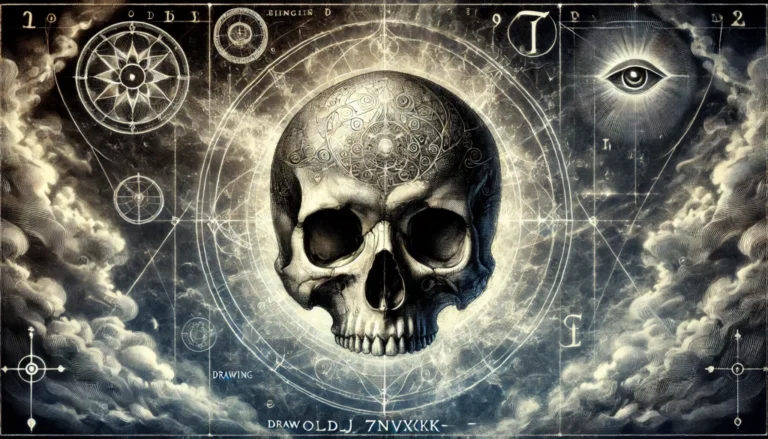Introduction to Skull Drawings
Skull drawings have long captivated artists, anatomists, and enthusiasts alike. The skull, with its intricate structure and profound symbolism, serves as a powerful subject in art. In this article, we will delve into the fascinating realm of “drawing:oldj_7nsvxk= skull,” exploring techniques, anatomy, and the cultural significance of skull imagery.
Understanding Skull Anatomy
To master the art of skull drawing, one must first understand the anatomy of the skull. Comprising 22 bones, the skull can be divided into cranial and facial categories. This knowledge not only enhances the accuracy of your drawings but also informs your artistic choices.
The Cranial Bones
The cranial bones protect the brain and consist of:
- Frontal Bone: The forehead region.
- Parietal Bones: Forming the sides and roof of the skull.
- Occipital Bone: The back part of the skull.
- Temporal Bones: Located at the sides, housing the ears.
The Facial Bones
The facial bones provide structure to our features and include:
- Nasal Bones: Making up the bridge of the nose.
- Zygomatic Bones: The prominent cheekbones.
- Maxillae: The upper jawbones.
Understanding these bones is essential for anyone interested in “drawing:oldj_7nsvxk= skull,” as it helps create accurate representations.
Tools and Materials for Drawing Skulls
The right tools can significantly enhance your drawing experience. When it comes to “drawing:oldj_7nsvxk= skull,” consider using the following materials:
Pencils and Charcoal
- Graphite Pencils: Excellent for detailed sketches.
- Charcoal: Provides a rich texture and depth, ideal for dramatic shading.
Paper
- Sketch Paper: Useful for practice and rough drafts.
- Bristol Board: Perfect for final works due to its smooth surface.
Additional Tools
- Erasers: A kneaded eraser can help create highlights.
- Blending Stumps: Great for achieving smooth transitions in shading.
Techniques for Drawing Skulls
Mastering various techniques is key to successful skull drawing. Here are some methods to consider for “drawing:oldj_7nsvxk= skull“:
Contour Drawing
Contour drawing involves outlining the skull’s shape continuously. This technique sharpens hand-eye coordination and helps you understand proportions.
Shading Techniques
Effective shading adds depth and realism. Techniques include:
- Hatching: Creating parallel lines for tonal variation.
- Cross-Hatching: Layering lines in different directions for richer tones.
- Blending: Using a blending stump or your fingers for smooth shading.
Using Reference Images
High-quality reference images are invaluable for accuracy. Websites like “OldJ_7nsvxk” offer a variety of resources, showcasing skulls from different angles and lighting, which are perfect for artists.
The Symbolism of Skulls in Art
Skulls carry deep symbolism across cultures, often representing mortality, danger, and the transient nature of life. Artists have utilized skull imagery to provoke thought and evoke emotion.
Vanitas Still Life
In vanitas art, skulls remind viewers of mortality and the futility of earthly pleasures. These works often include other symbols, such as clocks and wilting flowers, emphasizing the passage of time.
Contemporary Skull Imagery
In modern art, skulls appear in various forms, from tattoos to street art. Artists like Damien Hirst and Jean-Michel Basquiat have incorporated skulls, challenging audiences to confront themes of life and death.
Step-by-Step Guide to Drawing a Skull
Let’s take a practical approach to “drawing:oldj_7nsvxk= skull” with a step-by-step guide:
Step 1: Basic Shapes
Start with basic shapes to lay the foundation. Sketch an oval for the cranium and a smaller shape for the jaw.
Step 2: Establish Proportions
Divide the skull into sections to maintain proper proportions. Lightly mark where the eye sockets, nose, and teeth will be.
Step 3: Refine the Outline
Once satisfied with the basic structure, refine the outline, adding details like the cheekbones and jawline.
Step 4: Add Shading
Begin shading using your preferred techniques, focusing on light and shadow areas for depth.
Step 5: Final Touches
Review your drawing for accuracy, adding any final details and highlights as necessary.
Also Read: Drawing:a4z_-ymtkr8= cat – Unlocking Your Artistic Potential
Conclusion
Drawing skulls offers an intricate blend of artistic skill and anatomical knowledge. Through the lens of “drawing:oldj_7nsvxk= skull,” artists can explore not just the technical aspects but also the rich symbolism embedded in this subject. Whether you are a beginner or an experienced artist, diving into skull drawings can elevate your understanding of both art and anatomy. Explore resources like “OldJ_7nsvxk” for inspiration, and keep honing your skills.


